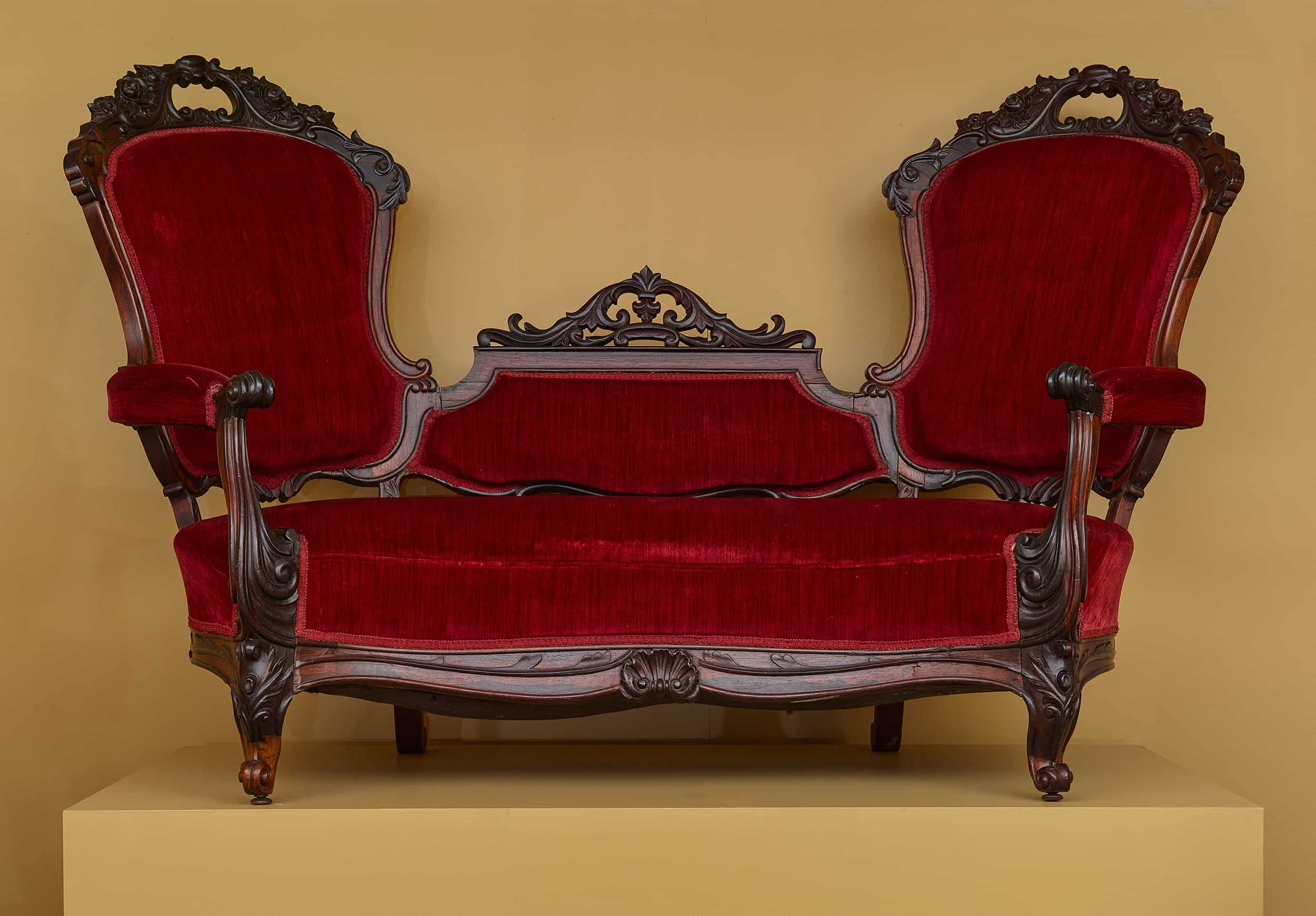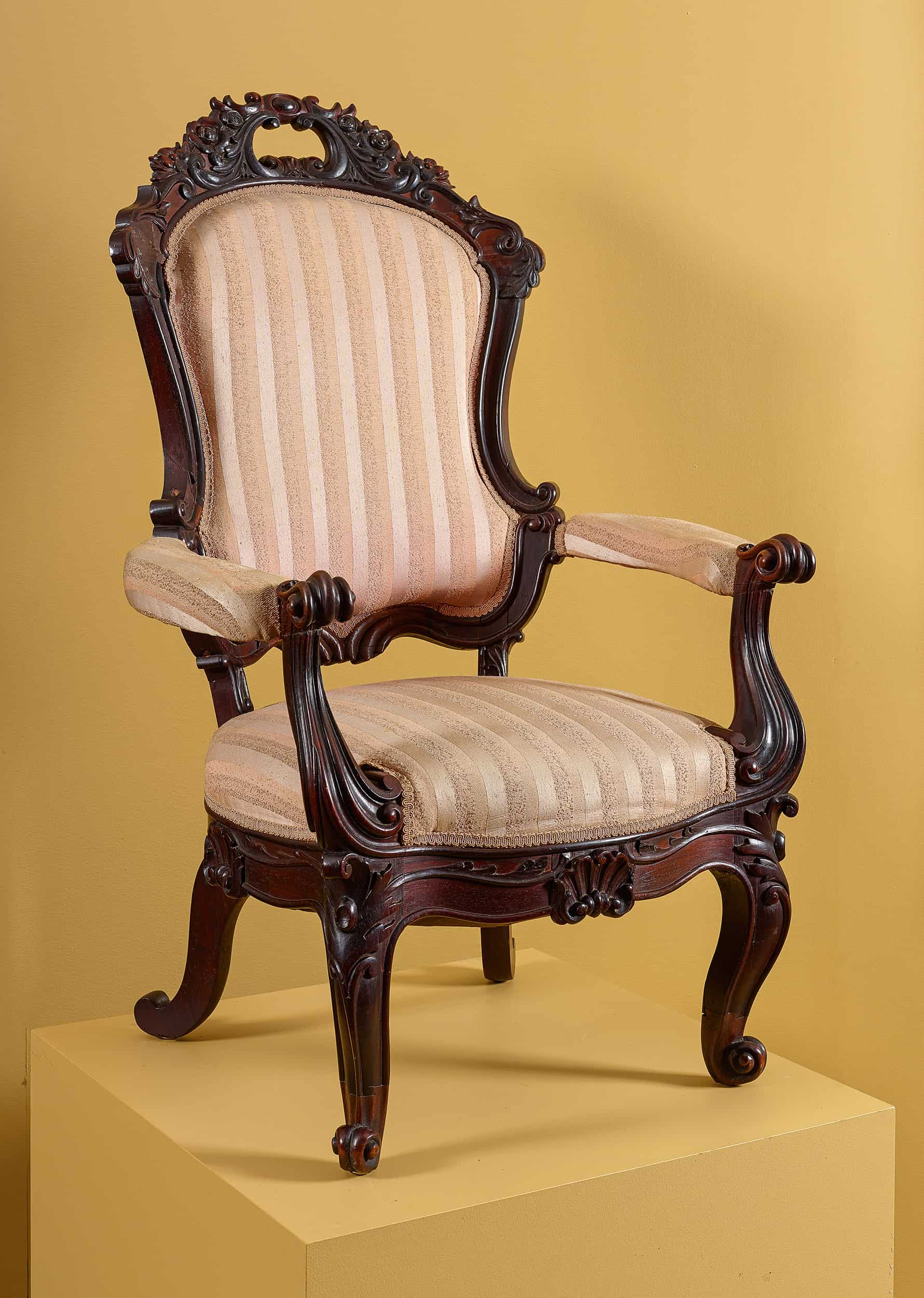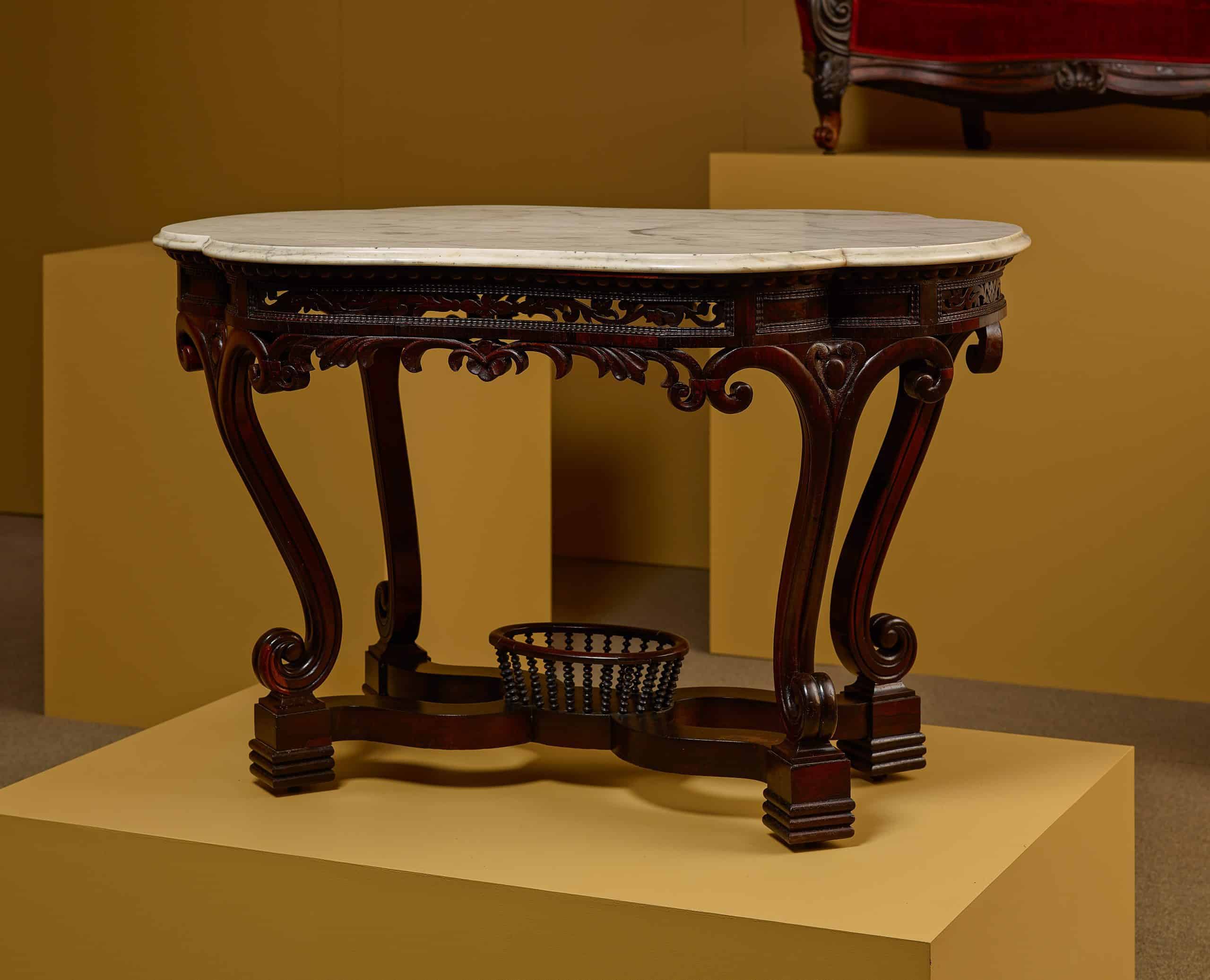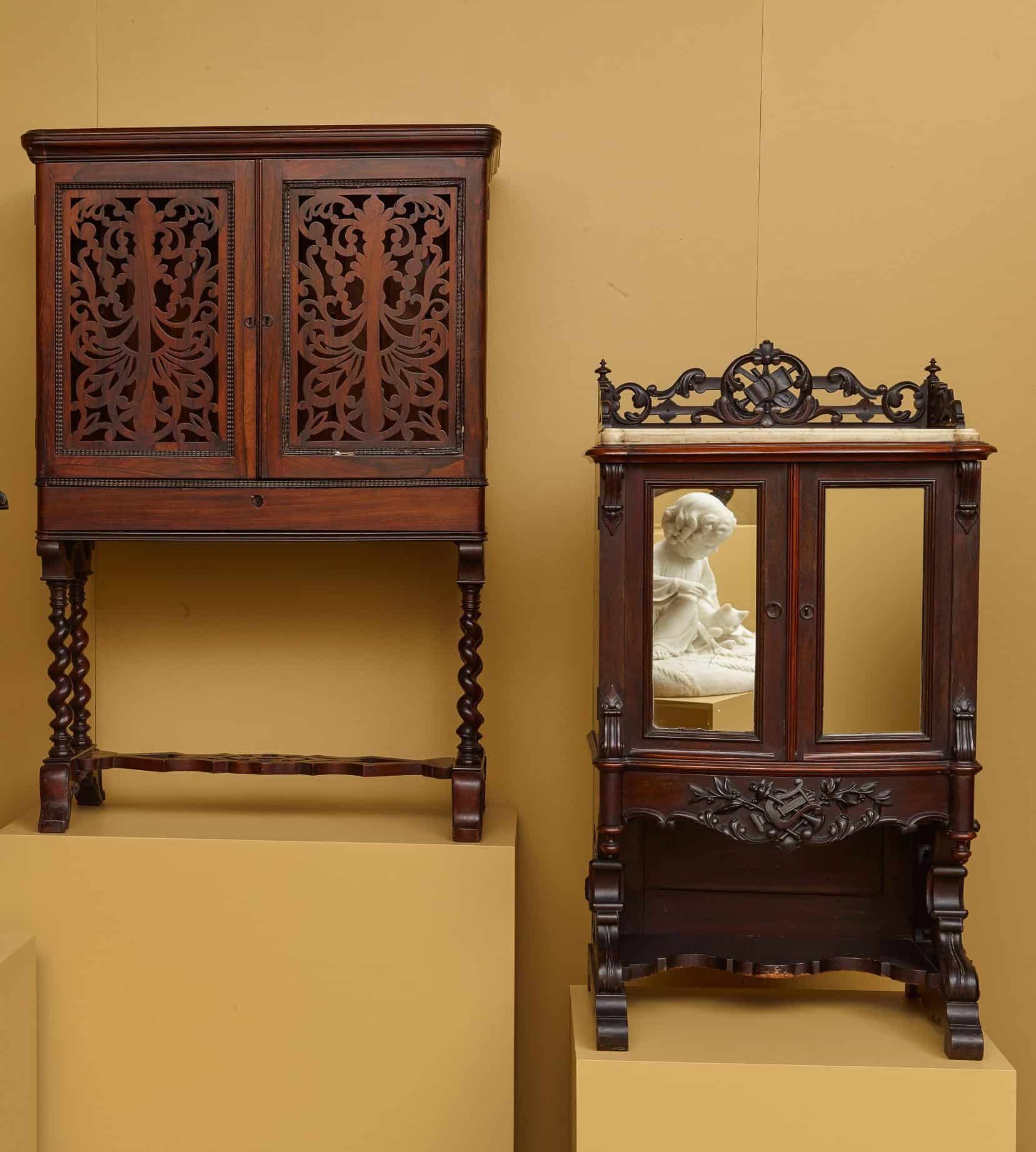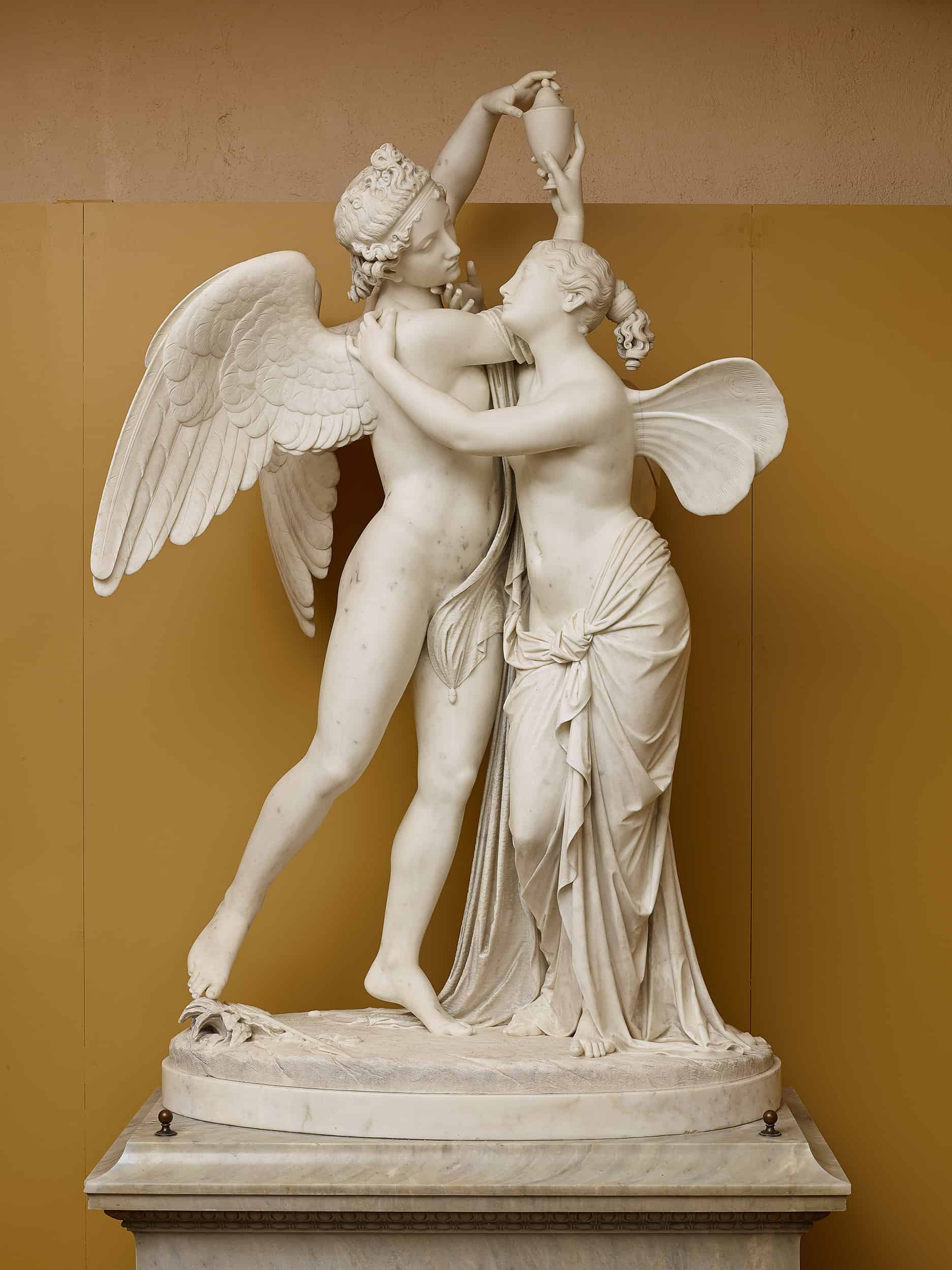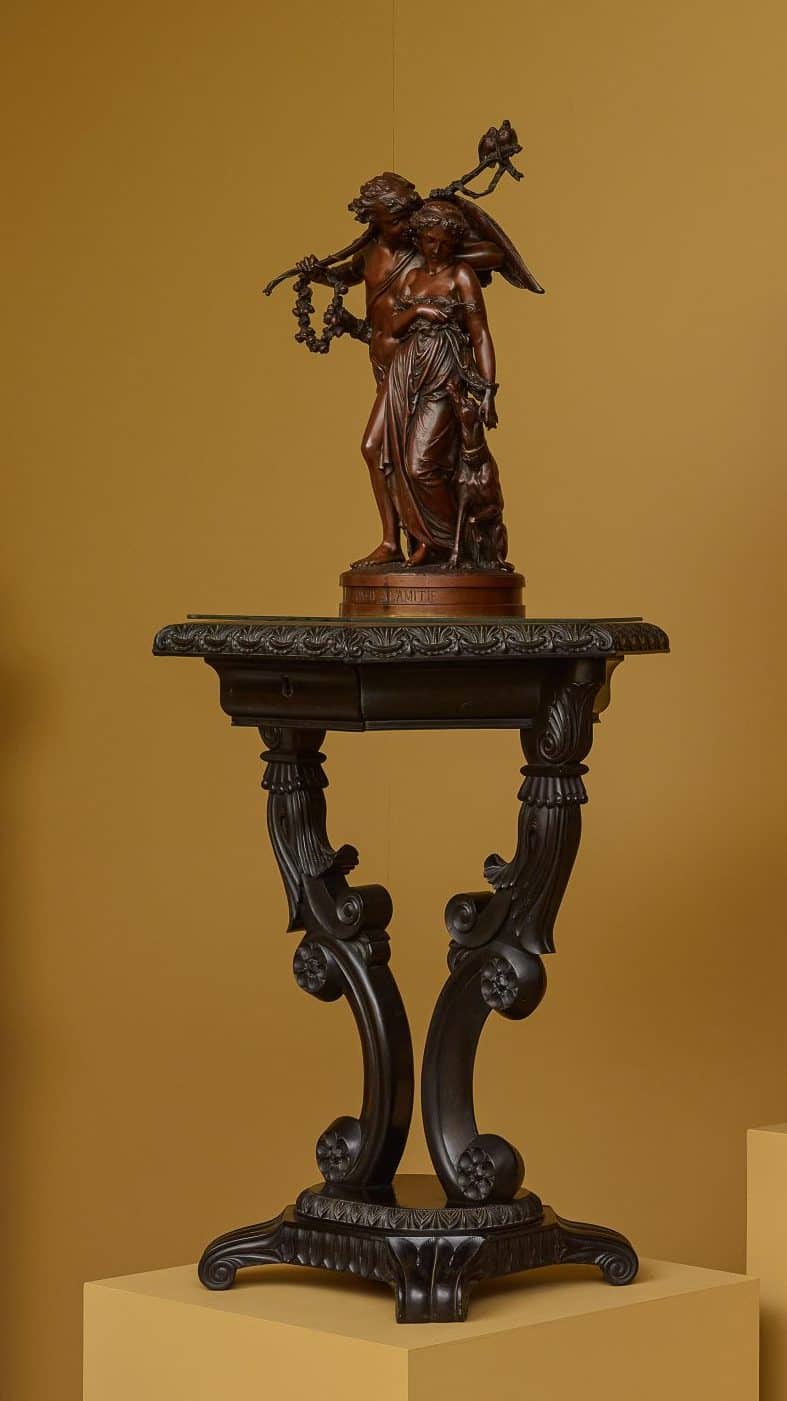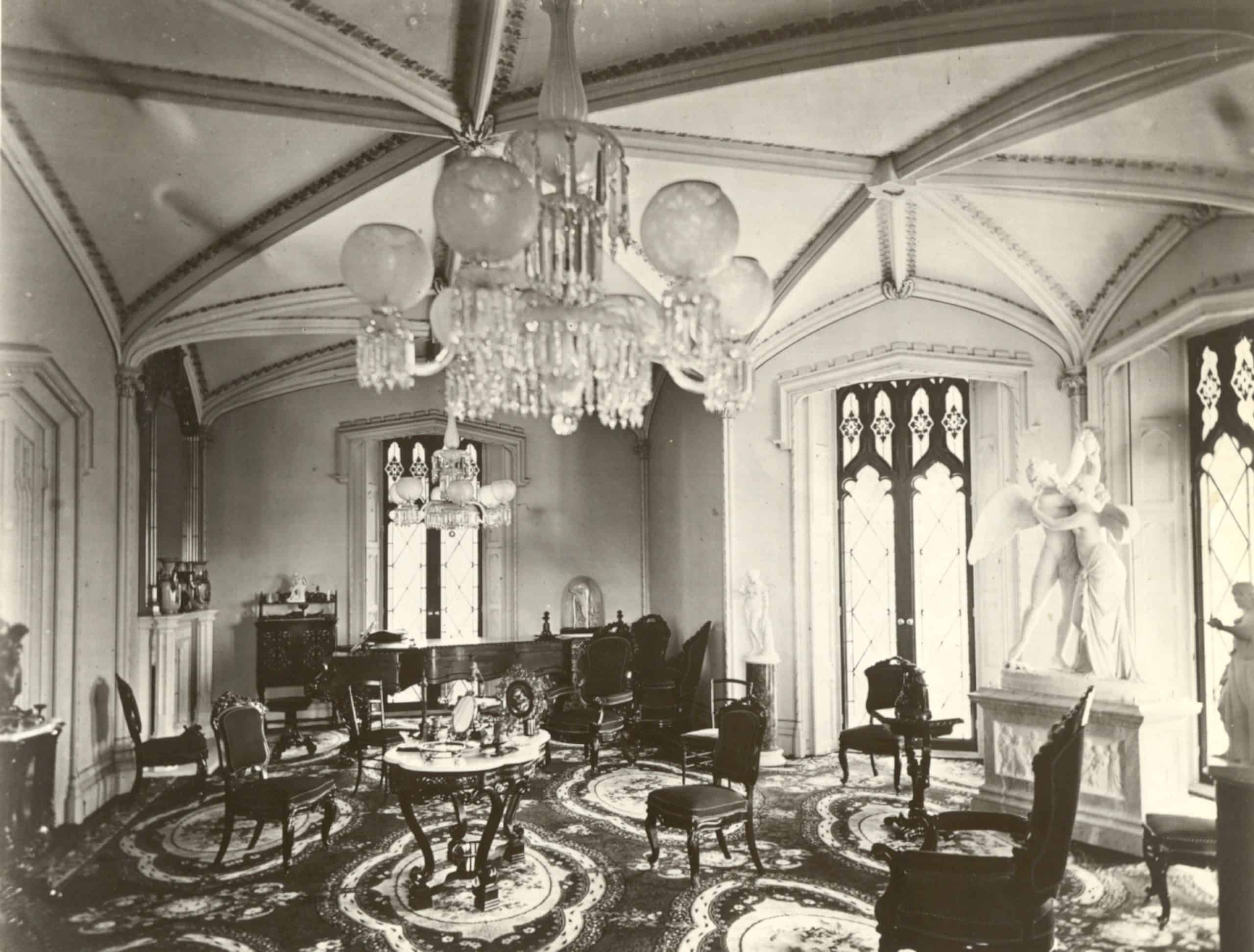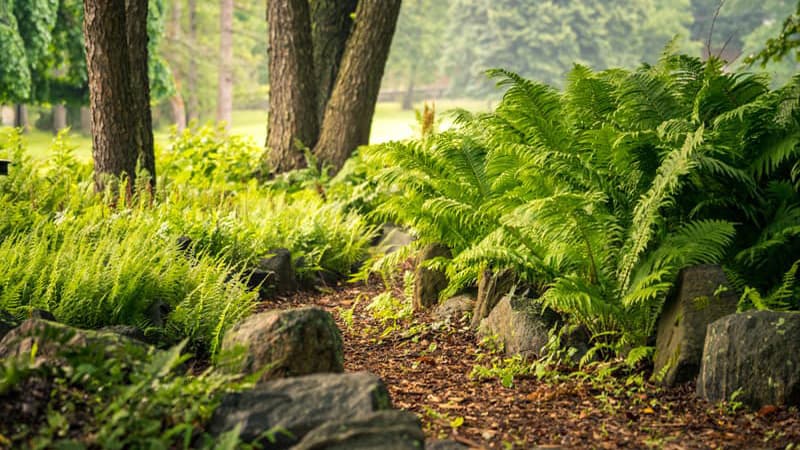George Merritt, the second owner of Lyndhurst, is largely responsible for the mansion that visitors experience today. After Merritt purchases Lyndhurst in 1863, he doubles the house in size, greatly expands the property holdings, and transforms the house from a comfortable villa to one of the most imposing mansions of the Hudson Valley.
Merritt does not change the architectural envelope of the Paulding parlor and it is likely that the volume and placement of furniture under the second owners roughly approximates that the first owners. However, with the Merritts, the overriding leitmotif if the decoration changes from a British to French influence. In keeping with the prevailing style of the Civil War era, the Merritt’s chose furniture that was “in the French taste.” Although these pieces are most likely made in America, (in case of the seat furniture, the pieces may have been manufactured by a French immigrant ebeniste) with curving lines, they reflect an American version of the French examples of Louis XV curving rococo lines. Additionally, the handsome woven wool carpet-as shown in period photographs- displays a pattern of bold repeating medallions which referenced French Aubusson carpets.
The Merritt parlor was still laid out in the manner that was similar to the layout under the Pauldings, with the extensive seating around the perimeter of the rooms, paraphernalia for the performance of music, restrained display of art and bric-a-brac, and no window treatments. The Merritts had a large parlor suite of eight side chairs, two armchairs, a sofa, and love seat. Additionally, there was a piano and a small grouping of music and other cabinets placed on the perimeter walls of the room with a marble-topped center table anchoring the middle of the room. The carved rosewood seat furniture is probably from the 1850s and predates the Merritt’s ownership of Lyndhurst. As was often the case, the family may have moved their slightly out of date city furniture up to their new country house. The seat furniture was possibly the work of Charles Baudoine or equivalent New York manufacturer working in the French style, of which there were many.
